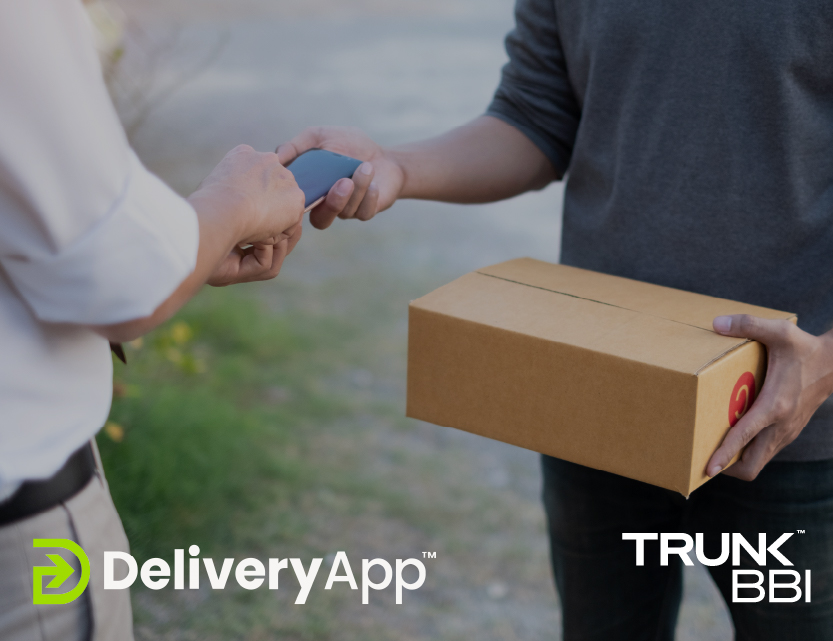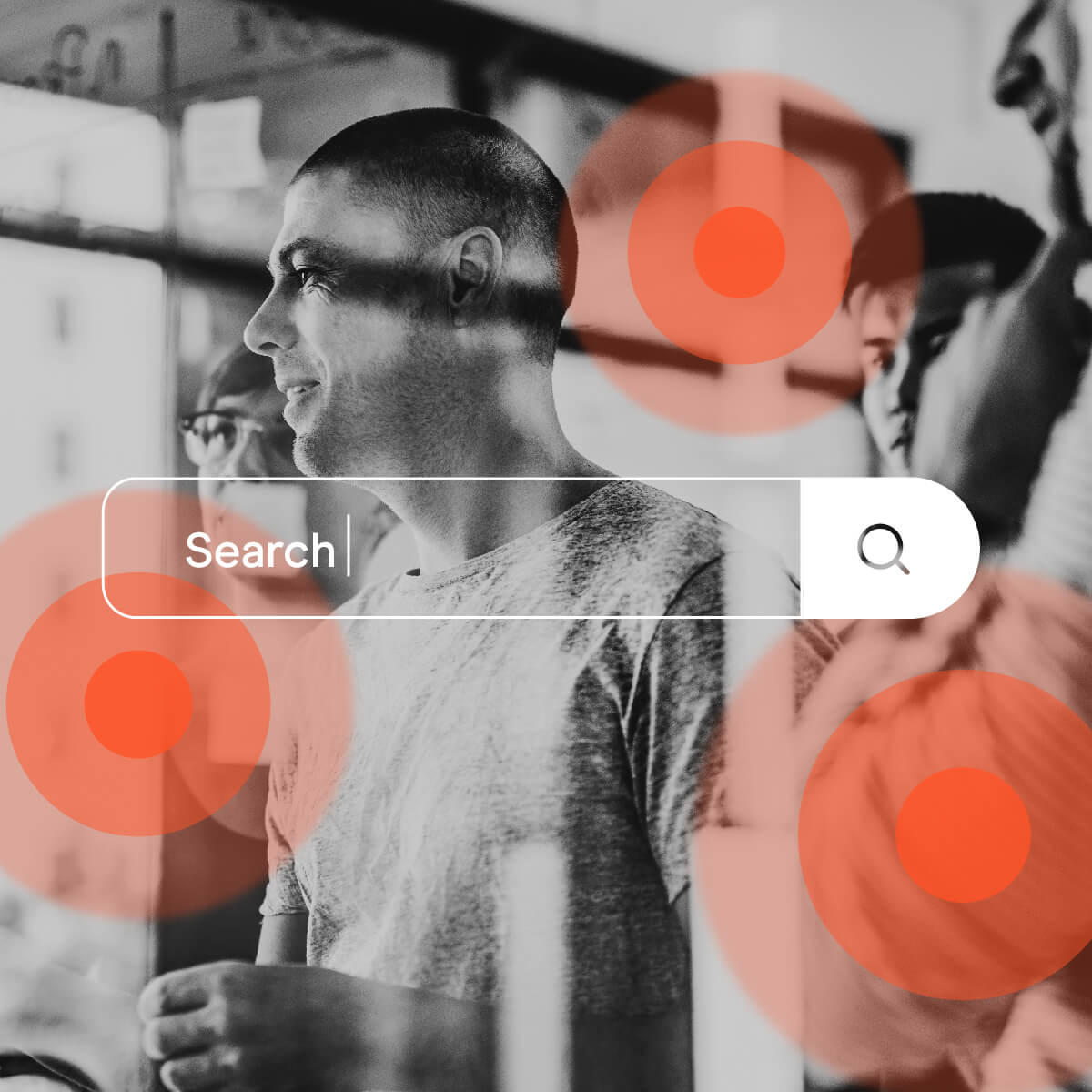“PR can’t be measured.”
It’s a statement that’s been batted about by business owners in every sector, and marketing professionals alike.
Traditionally, PR was one of the hardest marketing tactics to measure the true return on investment, but long gone are the days of measuring the size of print articles and attempting to equate an advertising equivalent onto brand mentions.
As we move and integrate more into a digital world, PR is just as measurable as other channels in your marketing mix. With businesses facing increasing pressures to be accountable in a time of economic uncertainty and shrinking marketing budgets, it’s important that you have the right tools, talent and teams to be able to devise a PR strategy that delivers for your business, brand and communications goals.
But what can you measure?
Traditional print and broadcast PR still remain huge drivers of brand awareness, product consideration and recall. But there’s still a lack of tangible, quantifiable ROI.
There are ways to ensure you are getting a return you can quantify from your investment in PR activity. We call it PROI, and it integrates digital measurement with your activity – no matter whether it’s through traditional or digital channels.
Digital and brand integration is key
To make your PR strategy—and budget—work harder, digital and brand teams need to be aligned on key brand goals, use of budgets, and all internal considerations. So, one of the first questions you should ask yourself is…
How aligned are your teams?
It’s a bold question, but one that needs answering for you to understand how to get the most of your shared goals, PR activity and budgets. So consider…
- Are your internal SEO, digital and brand teams working collaboratively?
- Are SEO teams considering any ongoing brand activity as a tool they can leverage for link acquisition or content?
- Are your brand teams considering the difference that calls to action can make to a marketing stunt or social media activation, and do they know how that will perform in search?
In today’s increasingly online world, a joined up digital PR approach can deliver more than traditional PR. How? By having a positive and demonstrable impact on performance and organic search goals.
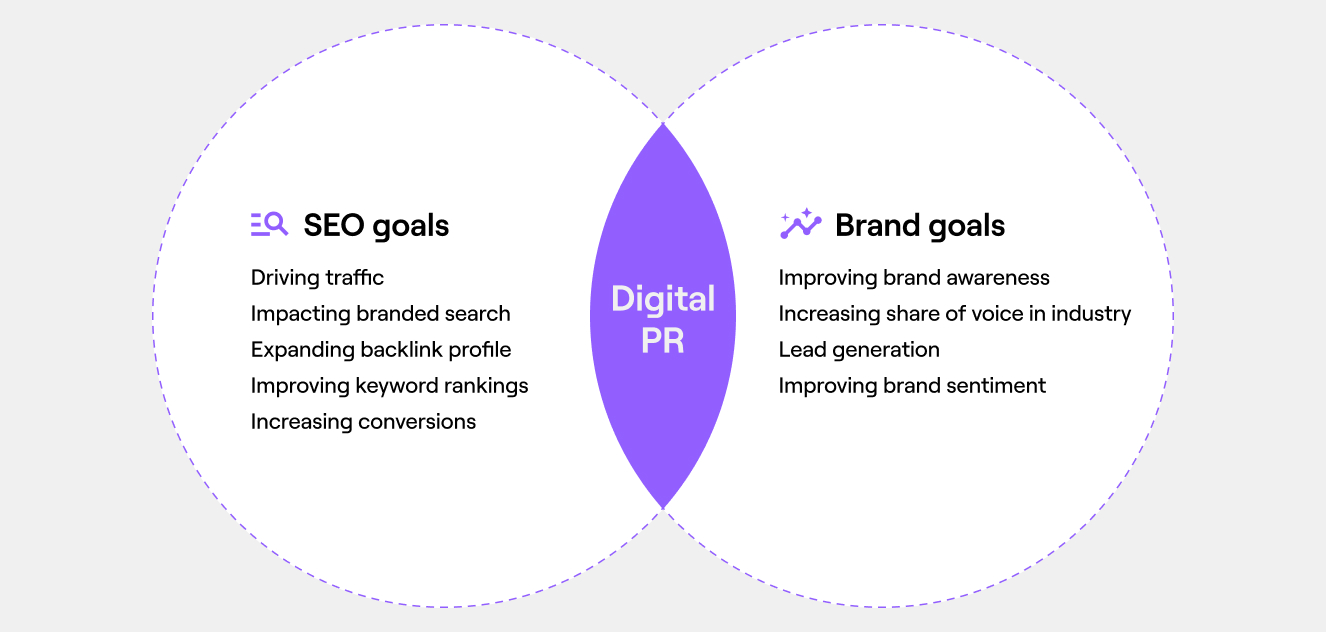
But this can only work if there’s true collaboration… real synergy… across brand and search.
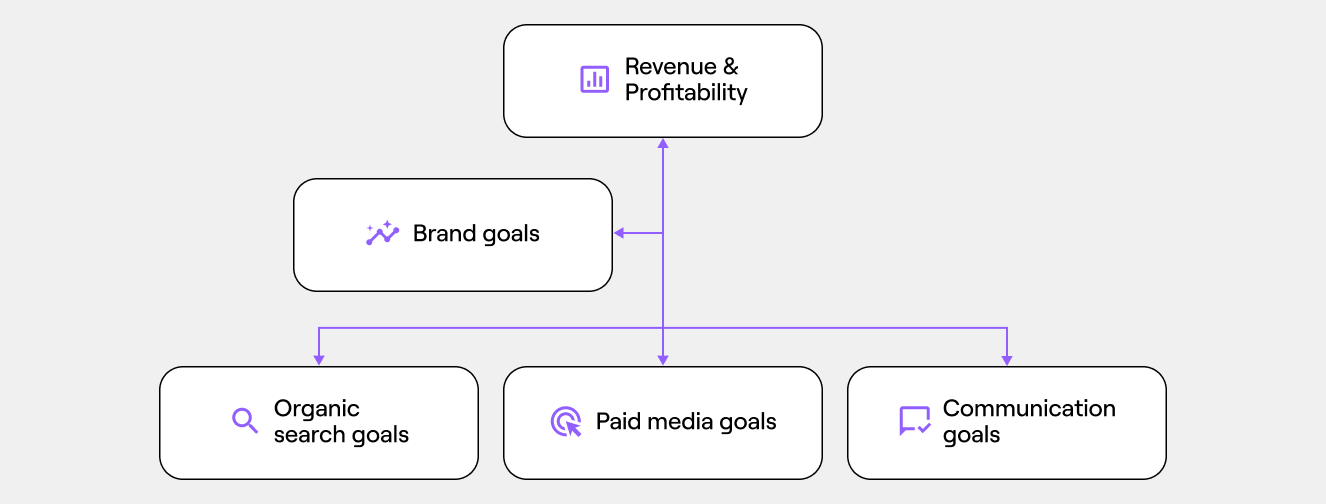
68% of online experiences begin with a search engine.
BrightEdge & AHRefs, 2022
The majority of all online journeys start at a search engine, which means often users are wanting answers to questions. People don’t immediately seek to search for a brand story, so we need to consider how any PR activity is going to compliment this user behaviour.

Search and brand are increasingly symbiotic
Your specific search campaigns may never be able to reach the audiences a brand campaign can. But, on the other hand, a brand campaign may burn brightly with attention – but ultimately not drive the right customers to the right places.
So, can brand campaigns be measured in part by digital teams? Yes. For example, if you’re executing a cross-channel brand campaign, you could build in link acquisition to help with digital and search performance.
For optimum ROI, create content that can be utilised over earned, owned and paid channels
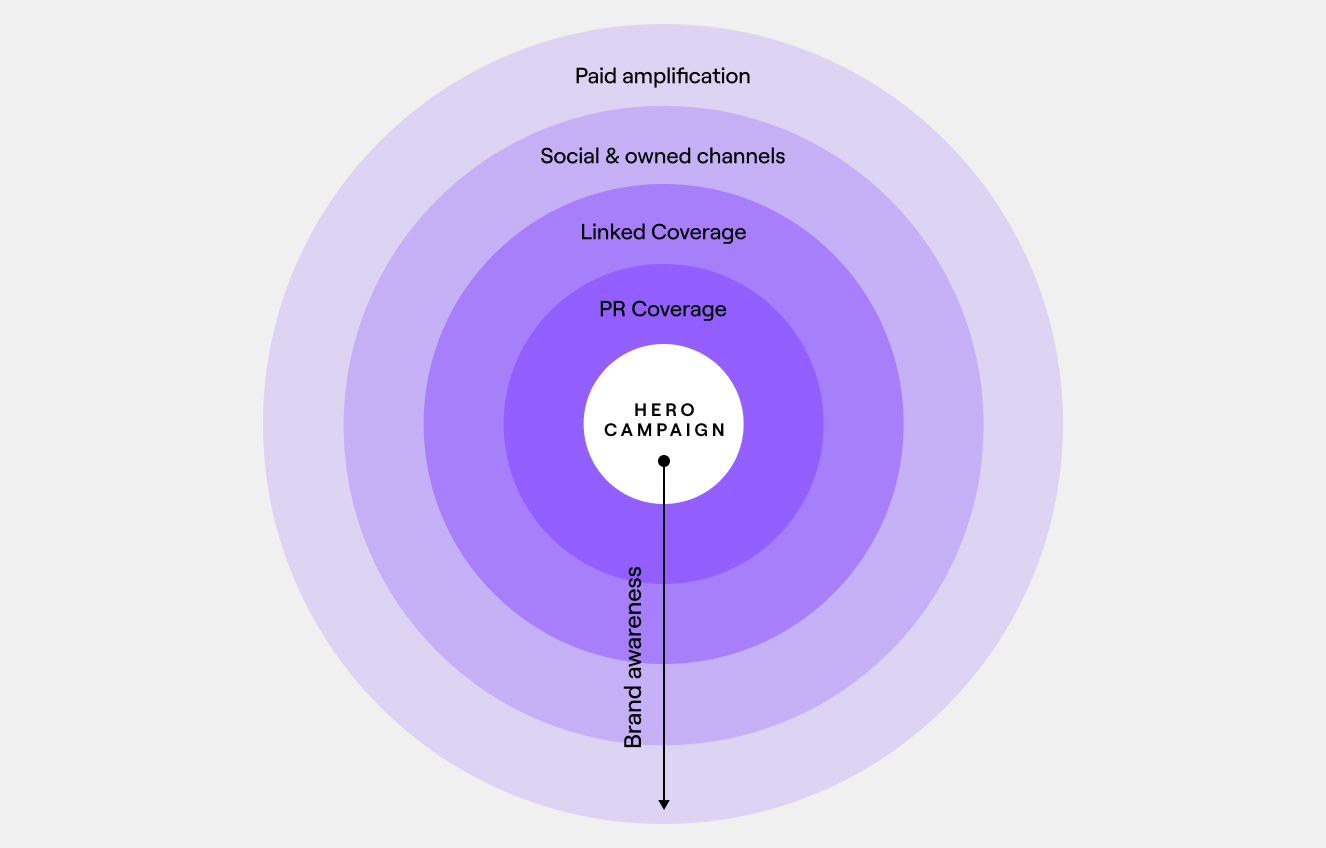
There are multiple ways you can make any content production work harder:
- Use internal data where possible, as this saves external costs and provides a unique narrative the press appreciate.
- Share insights across search and brand teams – there may be target keywords or content considerations to include in any brand work that will benefit organic performance.
- Choose imagery or video content that can be repurposed for owned and social channels.
- Consider where paid amplification could benefit the strategy.
Making PR measurable
With budgets tighter, brands need to see the precise, measurable impact of their PR activity. Whilst most will understand what equates to ‘good press coverage’, we can go further into analysing what each piece of coverage has achieved for the business and its communication goals.
The starting point is being clear about what you and any stakeholders want to measure. Are you interested in knowing about branded search, brand awareness, or traffic? How deep do you want to dive into specific search metrics? Make sure you have a good idea before you begin campaign activity.
Don’t settle for vanity metrics
Vanity metrics can be defined as numbers that make you look good to others (or to yourself) but don’t help your business to understand your marketing performance or inform your future strategies. As an industry, we’ve moved onto more sophisticated ways of measuring PR activity, so watch out for some of these:
Advertising Value Equivalent (AVE). Once used to try and attribute an advertising value on the ‘size’ of coverage – this has never had any meaningful learning as is something the majority of serious players in the industry have long moved away from.
Unique Monthly Visitors (UMV). It’s true that on average, Forbes is read by 12 million people a month, but that doesn’t necessarily mean that your article in a specific sub category will reach 12 million people. It’s important to understand nuance and be realistic with what any coverage in a publication will mean amongst your audience, and for your business.
Publication reach. Similar to UMV, this doesn’t tell us how many people are reading with any precision. Whilst it can be useful to know how many readers a publication gets – it should be part of a much tighter and more measurable strategy when analysing coverage gained.
Metrics to consider instead
Measuring your comms strategy
- Media placements
Simple, but measuring quantity is still a part – as well as the quality. - Percentage of linked coverage
To make your campaign have an impact on organic performance, the higher percentage of links pointing from publications to your website will positively affect your search results. - Referral traffic driven from publications acquired
A biggie. If you place your campaign in The Guardian, and also in a lower-authority niche publication – but you see huge traffic from the latter. What does it tell you about your considered audience? - Assisted website conversions
This is crucial in understanding the consumer’s purchase journey once they do land on your site. - Quality of press office placements
Quality is often more important than quantity, especially from a links and SEO perspective.
Measuring the impact on search performance and brand awareness
- Backlink profile metrics and scoring. Take into account your competitors in the search landscape, and from where particular links may have the most impact.
- Organic search performance. Ranking better for certain target keywords could see a huge impact on your business – monitor how campaign activity is influencing any changes.
- Coverage sentiment scoring
- Brand sentiment scoring. Similarly – keeping an eye on brand sentiment can be important to monitor if your PR activity is having the desired effect.
- Brand search volume change. If you see increases in branded search, or particular keywords rising in correlation to your branded search – you can correlate the effect from any activity that may have contributed.
Measuring the impact on business performance and revenue
- Website goal completions. PR coverage that’s driving traffic through to complete a sales enquiry on-site can be ratified into potential ROI.
- Conversions by channel. f you see unexpected traffic from a particular social platform – is it worth revising your channel content strategy?
- User journey from referral. Are readers of particular content converting over others? This can inform your PR strategy going forward.
- Conversions per referral. Equating cold hard cash to unique users from any PR coverage received.
- Change in organic/paid traffic. A decline in paid traffic but an increase in organic may indicate improved results off the back of a joined up brand and search campaign.
In isolation, each of these metrics will only tell a tiny part of the story. But together, they build a comprehensive picture of the PR activity’s ROI.
Key steps to start to understand the ROI on your PR
Understand your referrals
Once your digital PR activity is generating links from publications for you, closely monitor the publications delivering spikes in traffic, and note the demographics.
This quickly becomes vital information to feedback to stakeholders about where PR is successfully adding value for the business. It may also give you better insights for your audience profiles.
Understand your stakeholder’s language
It’s vital to recognise that senior board members and stakeholders may have a very different perspective from yourself, or your search or brand teams. The CEO may not understand the intricacies of improving keyword rankings, but they’ll see that shiny piece of coverage in The Guardian as a huge brand win.
Don’t sit in siloes
If you’re the one reporting to the CEO, think about how to present results that integrate PR and organic budgets. Demonstrating a collaborative approach between teams also ensures best practice work, that makes those budgets work harder too.
Make KPIs understandable
Whether you have a traditional comms or a tech SEO background, remember that not everybody speaks your language. Make sure you set KPIs whose value senior stakeholders can understand—and that your activity can realistically achieve.
Be honest to avoid scope creep
Everyone wants as much as possible from their marketing spend. This is best achieved with brand and digital PR teams working together. But, you still need to be honest with stakeholders about what is achievable.
If a CEO has been promised record-breaking revenue off the back of one digital campaign, even fantastic SEO results may be seen as disappointing.
Help the higher-ups to understand that getting the most out of a PR budget isn’t the same as being unrealistic about the budget. If somebody claims they can deliver huge brand campaigns, whilst taking into account search optimisation and acquiring high-authority backlinks through press outreach for a couple of hundred quid… you know they’re promising the impossible.
Remember, the more collaboration between your internal teams and channels – the more informed and strategic any of your PR activity will be, across brand or digital channels.
Want to talk digital PR? Get in touch by filling in the form below or giving us a call.



